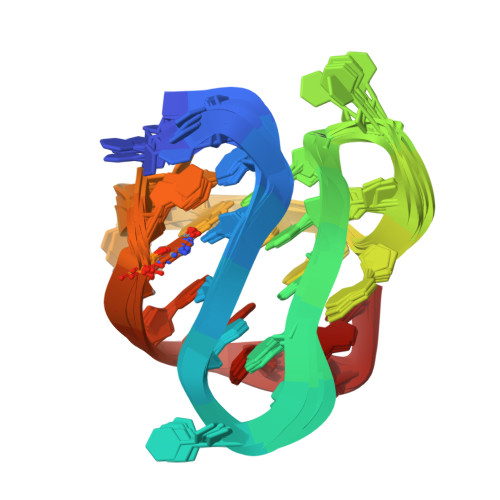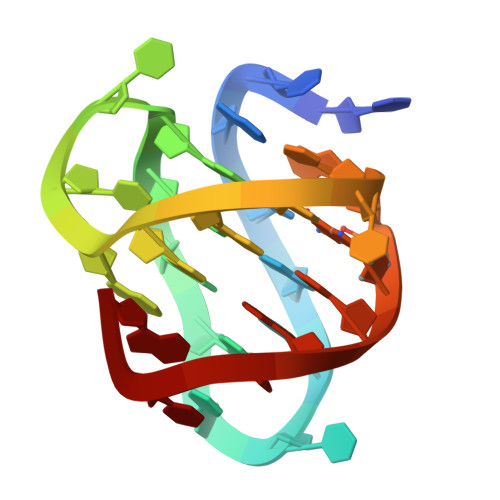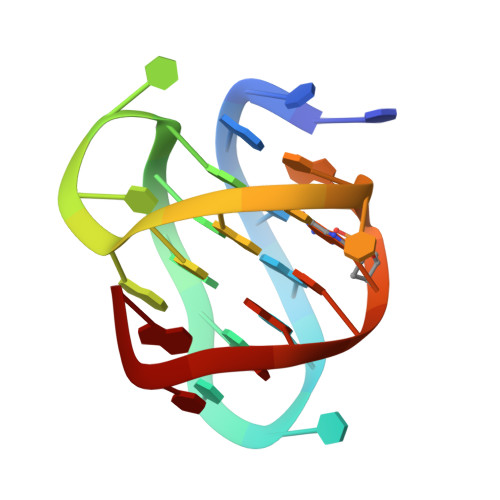Structure of the human telomere in Na+ solution: an antiparallel (2+2) G-quadruplex scaffold reveals additional diversity.
Lim, K.W., Ng, V.C., Martin-Pintado, N., Heddi, B., Phan, A.T.(2013) Nucleic Acids Res 41: 10556-10562
- PubMed: 23999095
- DOI: https://doi.org/10.1093/nar/gkt771
- Primary Citation of Related Structures:
2MBJ - PubMed Abstract:
Single-stranded DNA overhangs at the ends of human telomeric repeats are capable of adopting four-stranded G-quadruplex structures, which could serve as potential anticancer targets. Out of the five reported intramolecular human telomeric G-quadruplex structures, four were formed in the presence of K(+) ions and only one in the presence of Na(+) ions, leading often to a perception that this structural polymorphism occurs exclusively in the presence of K(+) but not Na(+). Here we present the structure of a new antiparallel (2+2) G-quadruplex formed by a derivative of a 27-nt human telomeric sequence in Na(+) solution, which comprises a novel core arrangement distinct from the known topologies. This structure complements the previously elucidated basket-type human telomeric G-quadruplex to serve as reference structures in Na(+)-containing environment. These structures, together with the coexistence of other conformations in Na(+) solution as observed by nuclear magnetic resonance spectroscopy, establish the polymorphic nature of human telomeric repeats beyond the influence of K(+) ions.
Organizational Affiliation:
School of Physical and Mathematical Sciences, Nanyang Technological University, 637371 Singapore, School of Biological Sciences, Nanyang Technological University, 637551 Singapore and Instituto de Química Física Rocasolano, CSIC, 28006 Madrid, Spain.
















